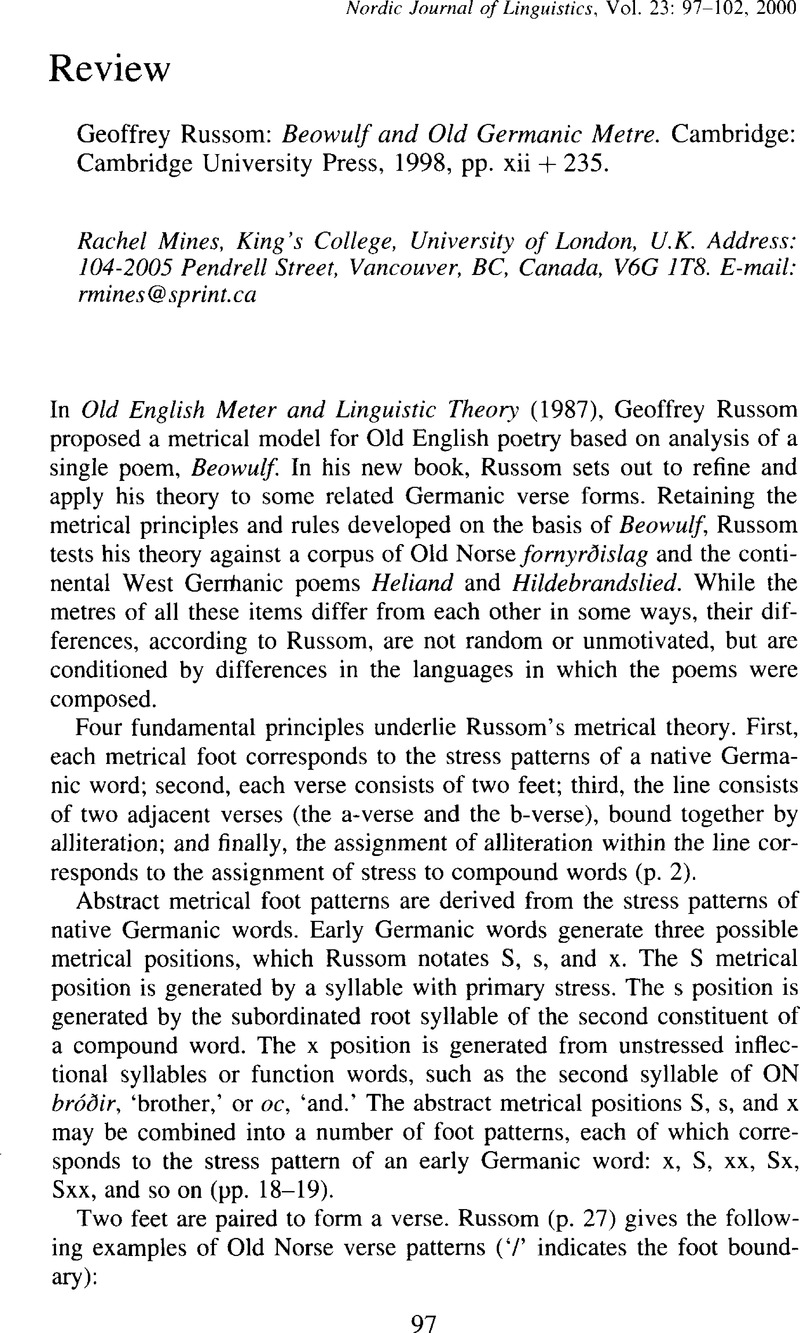No CrossRef data available.
Article contents
Geoffrey Russom: Beowulf and Old Germanic Metre. Cambridge: Cambridge University Press, 1998, pp. xii + 235.
Review products
Geoffrey Russom: Beowulf and Old Germanic Metre. Cambridge: Cambridge University Press, 1998, pp. xii + 235.
Published online by Cambridge University Press: 22 December 2008
Abstract
An abstract is not available for this content so a preview has been provided. Please use the Get access link above for information on how to access this content.

- Type
- Reviews
- Information
- Copyright
- Copyright © Cambridge University Press 2000
References
REFERENCES
Fakundiny, L. 1970. The Art of Old English Verse Composition. Review of English Studies 21, 129–142, 257–266.CrossRefGoogle Scholar
Halle, M., & Keyser, S. J. 1971. English Stress: Its Form, its Growth, and its Role in Verse. New York: Harper.Google Scholar
Hutcheson, B. R. 1992. Kuhn's Law, Finite Stress, and the Critics. Studia Neophilologica 64, 129–139.Google Scholar
Kuhn, H. 1933. Zur Worststellung und -betonung im Altergermanischen. Beitrage zur geschichte der deutschen sprache und literatur 57, 1–109.CrossRefGoogle Scholar
Momma, H. 1997. The Composition of Old English Poetry. Cambridge: Cambridge University Press.Google Scholar
Russom, G. 1987. Old English Meter and Linguistic Theory. Cambridge: Cambridge University Press.Google Scholar
Sievers, E. 1968. Old Germanic Metrics and Old English Metrics. Luster, G. D., trans. In Bessinger, J. B. & Kahrl, S. J. (eds), Essential Articles for the Study of Old English Poetry. Hamden: Archon, 267–288.Google Scholar
Slay, D. 1952. Some Aspects of the Technique of Composition of Old English Verse. Transactions of the Philological Society 1952, 1–14.Google Scholar


